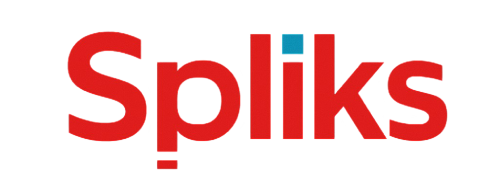Project management has evolved from simple to-do lists and Gantt charts to a multifaceted discipline involving resource allocation, time tracking, stakeholder communication, and risk management. With the rise of artificial intelligence, a new class of tools has emerged—tools that don’t just automate, but actually think alongside you. One of the most powerful among these is ChatGPT.
Unlike traditional software, ChatGPT is a conversational AI that can serve as a virtual project coordinator, assistant, strategist, and even team coach. In this article, we explore how project managers can creatively and effectively use ChatGPT—not just as a productivity gimmick, but as a real game-changer in project management.
Table of Contents
1. Laying the Foundation: Project Planning with ChatGPT
Before a single task is assigned, a project must be conceptualized, scoped, and mapped out. Here’s how ChatGPT fits in:
a. Defining Scope and Objectives
You can prompt ChatGPT with something like:
“Help me define the scope for a SaaS platform development project targeting remote education.”
ChatGPT can generate:
- A list of objectives
- Success metrics
- Limitations and assumptions
- Stakeholder roles
This early-stage brainstorming helps solidify ideas into actionable terms and gives you a jumpstart on your project charter.
b. WBS (Work Breakdown Structure) Drafting
Ask:
“Create a WBS for launching an eCommerce website.”
ChatGPT will break down the entire project into main deliverables, sub-deliverables, and tasks. While it may not follow a strict PMI format, it provides a working template you can polish.
c. Risk Identification
You can ask:
“List 20 potential risks for a software implementation project in a financial company.”
Instead of spending hours in a risk workshop, you’ll get instant lists with probability-impact matrices and even suggested mitigations if prompted further.
2. Dynamic Scheduling and Timeline Suggestions
A project schedule is often rigid in traditional tools. But ChatGPT adds fluidity and creative insight.
a. Milestone Creation
Give a goal:
“I want to launch by December 1st. It’s a 4-phase rollout. Suggest milestone dates with 2-week sprints.”
ChatGPT can back-calculate your timeline, distribute sprints logically, and suggest checkpoint reviews or buffer periods.
b. Schedule Optimization
Got resource bottlenecks or delays?
Ask:
“How can I reorganize the schedule to accommodate a 2-week delay without moving the final deadline?”
You’ll get options like fast-tracking, crashing, resource reallocation, or parallel task suggestions.
3. Intelligent Task Management and Delegation
Project managers often struggle with task clarity and delegation. ChatGPT helps fill the gaps.
a. Task Generation
From a goal statement, ChatGPT can derive all required tasks. For example:
“I want to launch a digital ad campaign for a new product in 30 days. Generate all the tasks.”
You’ll receive a task list grouped by strategy, creative, media buying, analytics, and launch.
b. Role-Based Delegation
Once tasks are identified, ask:
“Assign these tasks based on a team with a marketer, designer, copywriter, and developer.”
ChatGPT smartly allocates based on role relevance and even adds reminders for collaboration tasks.
4. Real-Time Decision Support
One of ChatGPT’s strongest features is being an always-available sounding board.
a. Strategy Alternatives
When decision-making gets tough, use ChatGPT to simulate outcomes.
Ask:
“Should we build the feature in-house or outsource it to a vendor? What are the pros and cons?”
ChatGPT offers structured comparisons, decision matrices, and long-term vs short-term implications.
b. Stakeholder Communication Drafting
You don’t need to write every email from scratch. Try:
“Write an update email to stakeholders explaining a 1-week delay due to third-party issues.”
You’ll receive a clear, professional, and empathetic message in seconds.
5. Agile Project Management with ChatGPT
Agile teams thrive on iteration and continuous feedback—something ChatGPT supports effortlessly.
a. Sprint Planning Assistant
Use prompts like:
“Based on our backlog, help me prioritize tasks for a 2-week sprint with 4 developers and a QA.”
ChatGPT can consider time estimates, dependencies, and even developer specialties if informed.
b. Retrospective Guidance
ChatGPT can guide retrospectives with:
“Give me 5 questions to ask in a sprint retrospective for a team that struggled with deliverables.”
Sample questions it might suggest:
- What slowed us down the most this sprint?
- Were our sprint goals realistic?
- How can we improve our estimation accuracy?
It helps make retrospectives more than routine check-ins.
6. Documentation and Reporting
Project documentation is essential, but often overlooked. ChatGPT can automate and enhance this.
a. Meeting Summaries
After a meeting, paste your raw notes and ask:
“Summarize this meeting with action items and responsible persons.”
ChatGPT refines messy text into structured minutes that you can instantly share.
b. Weekly Reports
Prompt:
“Generate a weekly project status report based on these updates: [list updates].”
ChatGPT formats the input into sections like:
- Summary
- Completed Tasks
- Upcoming Work
- Risks & Mitigations
- Stakeholder Notes
It ensures consistency and saves hours of formatting.
7. Team Collaboration and Soft-Skills Support
Project management isn’t just about plans—it’s about people.
a. Conflict Resolution
If tensions rise, ChatGPT can guide:
“One team member feels others are not respecting deadlines. How should I approach this?”
It might suggest a private 1-on-1 conversation, team norms clarification, or a collaborative agreement strategy.
b. Motivation and Morale
Prompt:
“Share 5 creative ways to boost morale after a hard sprint.”
Expect gamified break ideas, kudos templates, or mini-recognition ceremonies that go beyond the usual “pizza party” cliché.
8. Custom Workflows and Integration Ideas
While ChatGPT doesn’t natively integrate with tools, it can design custom workflows and generate code snippets or API calls for you.
a. Trello/Jira Automation
Ask:
“Write a script to auto-assign a Jira task to the dev team when the status changes to ‘Ready for Dev’.”
ChatGPT can output Python or JavaScript code using relevant APIs.
b. Workflow Design
For complex workflows:
“Design a workflow for a 4-stage content approval process using Trello or Asana.”
It will suggest columns, automation triggers, team responsibilities, and even escalation logic.
9. Learning and Continuous Improvement
ChatGPT isn’t static—it grows with you.
a. Training New PMs
You can create a personal onboarding system:
“Generate a 4-week learning path for a junior project manager in software development.”
It will include:
- Week-by-week reading lists
- Practice scenarios
- Tools to explore
- Milestone check-ins
b. Personal Development
Want to improve your own skills?
Try:
“What are 5 advanced project management concepts I should master next?”
ChatGPT may suggest Earned Value Management (EVM), Monte Carlo simulations, Critical Chain Project Management, etc., and provide reading material summaries too.
10. Limitations and How to Overcome Them
While ChatGPT is powerful, it has limits. Awareness helps you avoid missteps.
a. No Real-Time Sync
ChatGPT doesn’t automatically sync with calendars, tools, or schedules. Use it for planning, not real-time execution.
Solution: Pair ChatGPT with automation tools (like Zapier) or APIs via your own middleware.
b. Context Boundaries
Without long context windows or memory, ChatGPT may “forget” previous steps in long discussions.
Solution: Provide summaries or anchor each prompt with context:
“Based on our previous sprint backlog: [paste backlog]…”
c. No Human Empathy
While great at simulating soft skills, ChatGPT can’t replace genuine empathy, leadership, or human judgment.
Solution: Use it as a support, not a substitute.
Conclusion
ChatGPT is not just a digital assistant—it can become an integral project partner when used creatively. It helps with strategic planning, real-time decisions, task management, documentation, and even team dynamics.
The key to unlocking its potential is not in treating it as a simple chatbot, but as an augmented intelligence tool—a collaborator that enhances your own insight, speed, and impact.
As AI continues to evolve, the best project managers will not be the ones who resist it, but the ones who learn to harness it.


